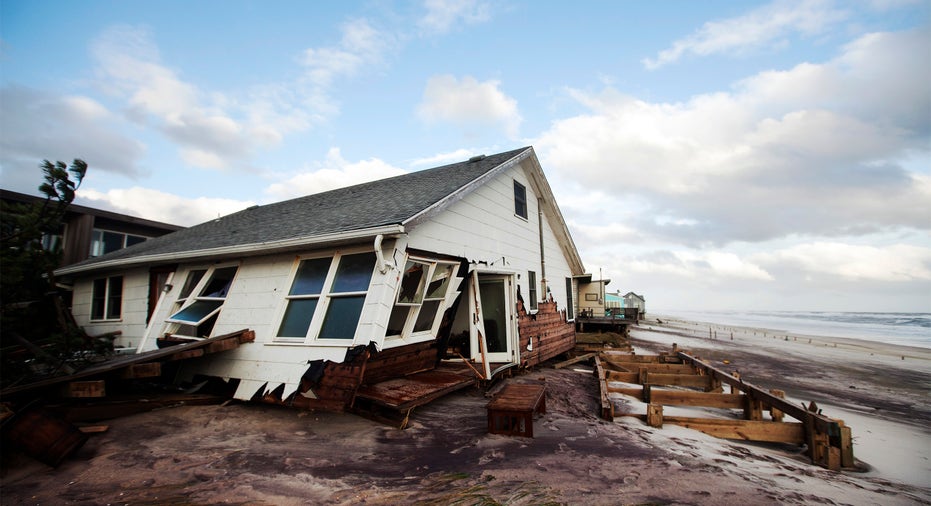As Insurers Mitigate Risk, Businesses Struggle to Prepare for Future Sandys

A year after Superstorm Sandy ravaged the East Coast, killing 285 people and destroying close to one million homes and businesses, some insurers fear businesses aren’t as prepared as they could be for another major natural catastrophe.
But as insurers put the final touches on pricier policies, many small businesses are still struggling to rebuild, never mind pay for increased insurance rates. It has put them at a disadvantage, hurting their ability to prepare for a future Sandy.
The storm that racked up some $70 billion in economic losses -- $26 billion of which were insured losses – served as a collective wake-up call for victims and insurers along the low-lying regions of New York and New Jersey.
“I think every insurance catastrophe leads to a response of both people being better prepared and insurers trying to take less risk and charging more for the risk they already have,” said Josh Stirling, an insurance analyst at Sanford Bernstein.
However, insurers have had the means necessary to mitigate future risk, whereas smaller businesses, in many cases, have not.
Sandy, the second costliest U.S. natural disaster behind Katrina, triggered $1.58 million in claims filed with private insurance companies, with the average commercial claim surpassing $44,500, according to data from Allianz. Some are still processing the complex commercial claims that poured in from the storm.
“Many insurers were not really charging the proper premium for the amount of coverage they were providing,” said Dave Finnis, National Property Practice leader at insurance broker Willis North America. “After the event, they did extensive reviews on just that issue.”
These post-Sandy reviews led to increased prices and lower limits, with insurance giants like Allianz (NYSE:ALV), Chubb (NYSE:CB) and Travelers (NYSE:TRV) rewriting the terms of policies to produce more risk-based plans.
The federal government, whose National Flood Insurance Program has been operating at a loss since Katrina, has also raised rates for flood insurance – some by as much as $10,000 a year.
Thousands of more properties are now considered to be in high-risk zones, which has left an estimated 35% of residents and businesses in New York City floodplains without the needed flood insurance, according to a recent Rand Corp poll.
The victims, meanwhile, are now finding a year after the devastating storm that they are too financially strapped to pay for the coverage they need. Many still don’t even have the money to demolish or rebuild destroyed properties.
Preparing for the Next Big One
Preparing for a “new normal” of severe weather-related events has proven a “laborious process” for homeowners and businesses, notes Tom Varney, regional manager for Allianz Risk Consulting in the Americas, in a recent report.
In some cases, it may take years to appropriate funding to actually make the much-needed changes, and that inevitably puts them at risk during the next big storm.
But the money issue aside, some victims still have not implemented the necessary emergency preparedness, and Allianz warns that makes them inadequately prepared for another natural catastrophe.
“Many businesses are not as prepared as they could be,” Varney said.
More than half of the female entrepreneurs in a new Travelers study said they don’t have or aren’t sure whether they have a business continuity or disaster recovery plan.
"We know of insureds that are definitely better prepared,” Finnis said. “But to say everyone’s heeded the warnings and are ready for the next one, I can’t really comment on that.”
It doesn’t help that this season has been unusually quiet: 2013 is so far only the second year on record that no hurricane-strength storms formed during the first half of the season.
The risk, however elusive, remains. Hurricane risk modeler RMS says there is a 20% chance that storm surge losses from future U.S. hurricanes that make landfall will be greater than wind losses. That chance rises to 40% along the Northeast coast.
“This is a risk the market can no longer afford to ignore,” said Claire Souch, vice president of model solutions at RMS.
Sandy hitting the Jersey Shore as a post-tropical cyclone -- rather than a hurricane -- should trigger alarms. Allianz warns businesses need to be prepared for the potential impact of a category 3 or 4 hurricane, which could cause far more extensive damage.
“It will only take a Category 3 hurricane with the right track to cause industry losses far exceeding anything we’ve seen to date,” risk modeling firm Karen Clark & Co wrote in a report.
While the insurers have severely cut down on their own risk – Chubb’s and Allianz’s shares are up 19% and 31%, respectively, since the storm despite reporting millions of dollars in catastrophe losses -- Sandy’s victims are now forced to think seriously about how to best prepare for the next major disaster.
Some more affordable steps to at least mitigate the risk for the time being are moving critical equipment off the ground level, buying generators to ensure interruption is limited and testing and retesting emergency and contingency plans.
If they haven’t already, businesses need to not only review but understand their insurance policies – including the fine print – and reanalyze the parameters of their coverage to prepare for worst-case scenarios.